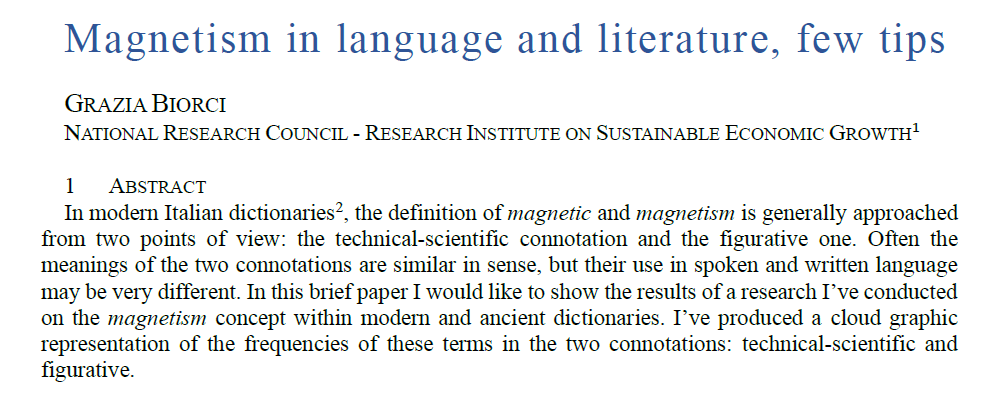Magnetism in language and literature, few tips
Giving a look into literature about magnetism, one may ask a question: Which comes first? The new naming of the phenomenon, or the use of an already existing word adapted in order to describe the phenomenon?
Enjoy the paper written by Grazia Biorci from CNR-IRCrES, where she analyses the term “magnetism” in the language and literature and gives some hints on how the linguistic transmission runs along two parallel paths, in balance between the progress of scientific knowledge and the specialization of its language.
This article has been inspired by a collaboration between Grazia Biorci and the OXiNEMS project in the framework of the 20th edition of the Genoa Science Festival for the exhibition “we are all magnetic”, dealing with magnetometers for consumer applications and biomagnetism. The OXiNEMS team acknowledge Grazia for her precious support!




 This project has received funding from the European Union’s Horizon 2020 research and innovation programme under grant agreement N.828784.
This project has received funding from the European Union’s Horizon 2020 research and innovation programme under grant agreement N.828784.